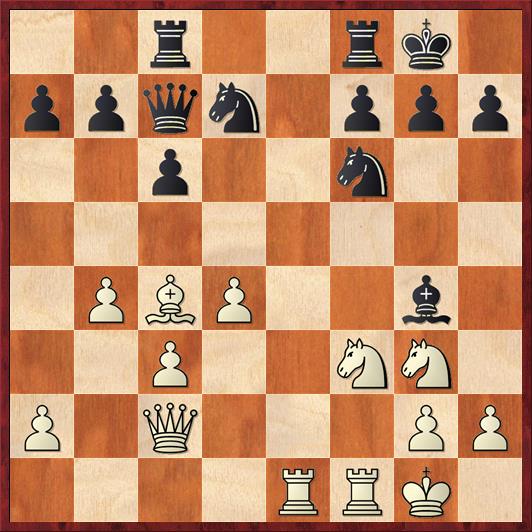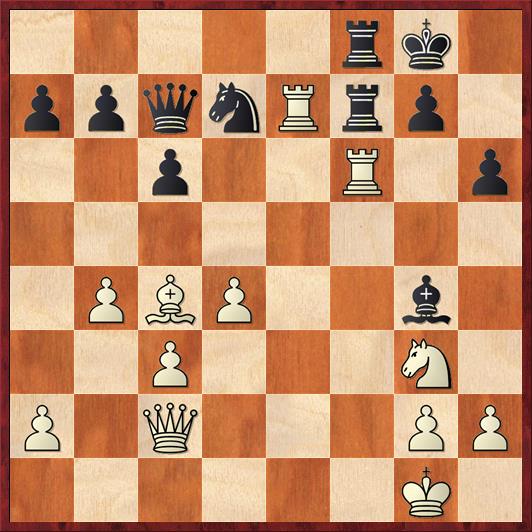Last weekend I played in the third round of the PRO Chess League Summer Series, in which the fans of the San Francisco Mechanics squared off against the fans of the St. Louis Arch Bishops. I won both of my games against a player named Typewriter44, and when I finished we had a comfortable-looking 15½ – 11½ advantage. But that lead quickly vanished and it remained neck-and-neck until the end, when St. Louis’s bottom board beat our bottom board to tie up the match at 22-22!
Under the league’s arcane rules, a tie was as good as a loss for us. Each team gets 1 point for a tie, but the tiebreaker is which team has more players, and St. Louis got the tiebreaker point. The thing is that we really had to beat them to have any shot at catching them or Chengdu for second place.
The other phase of the Summer Series is a 4-person elimination tournament between the “pro” players. That came down to a match between Varuzhan Akobian (St. Louis) and Sam Shankland (San Francisco). They drew their 15-minute game but Akobian won their bullet game (1-minute chess). So St. Louis also got 3 points for the elimination phase, which combined with their 2 points for the fan match put them into first place. The standings for the whole three-week series were:
St. Louis – 14, Chengdu – 12, San Francisco – 8, San Diego – 2.
There is still a chance that San Francisco will get into the playoffs, because two of the third-place teams will qualify by a popular vote. What I haven’t told you before is that the above group is only Group A, and in future weeks we will have Group B, Group C, Group D, and then the playoffs. I’ll let you know when it’s time to vote for San Francisco to make the playoffs.
In my games, Typewriter44 (rated 1602 on chess.com) did not put up very strong resistance. This game is an example of how good the King’s Gambit can be. I was pleased with the result, but then after the game I looked at the computer analysis on chess.com and realized that I had whiffed rather badly. Their computer software (Stockfish, maybe?) showed me with a 3.8-pawn advantage after move 16, but my 17th move shrank the advantage to 0.15 pawns, after which I had to win the game all over again. But in this case, a miss was as good as a mile — I won almost as fast as I would haveif I had played the right move!
Dana Mackenzie – Typewriter44
1. e4 e5 2. f4 d5 3. ed ef 4. Nf3 Qxd5 5. d4 Nf6 6. Nc3 Qd8 7. Bxf4 Bb4 8. Bc4 O-O 9. O-O Bg4 10. Ne2 …
Chessbase tells me that this is a TN. I liked the move because everything in White’s position is solidly defended, it lets me fortify my d-pawn with c3, and it begins the process of transferring my pieces to the kingside, where I am planning to attack. If Black plays 10. … Nd5, I thought that 11. Bg5 would be a little bit awkward for him, e.g. 11. … Qd6 12. c3 Ba5 13. Qb3. Of course I wasn’t sure, because the game was played at a rapid time control (game in 10 minutes plus 2 seconds per move). Instead Black continued developing, but somehow he drifted a little bit and his position very rapidly became critical.
10. … Nbd7 11. c3 Ba5?
I don’t like retreating the bishop this direction because it is now unable to help defend the kingside.
12. Qc2 Bb6 13. Rae1 …
I didn’t have a really concrete plan yet, but experience shows that it’s a good idea to invite all of your pieces to the party. Meanwhile, Black is facing a considerable amount of awkwardness. His pieces are all stepping on each others’ toes, and his queen rook has no way to get into the game. His next move really highlights the problem.
13. … Rc8?! 14. b4 c6?! 15. Ng3 …
At this point 15. Bd6 was already really good, but this methodical move sticks to my plan, and I think it is also perfectly okay.
15. … Bc7 16. Bxc7 Qxc7?
The queen had to stay on d8 to keep White’s rook out of e7.

FEN: 2r2rk1/ppqn1ppp/2p2n2/8/1PBP2b1/2P2NN1/P1Q3PP/4RRK1 w – – 0 17
White to play and win!
17. Bd3?? …
This is the most interesting point, psychologically, in the game. The problem is that I’m accustomed to playing people who are about at my rating level. It doesn’t usually happen that I get completely winning (+4 pawn) positions after 16 moves. So I just didn’t realize we had gotten to the “White to play and win” stage. I was still looking for incremental ways to strengthen my position. I thought the pressure on f7 had run its course, and I really wanted my bishop on the b1-h7 diagonal.
All of this was wrong. Black has terribly bungled the position. The f7 pawn is critically weak, and his giving my rook carte blanche to go to e7 should have been the straw that broke the camel’s back.
Have you found the winning move yet? It’s very simple: 17. Ng5!, building up pressure both on h7 and f7. Black is in a terrible spot. He can’t move either knight because he would then get mated on h7. He can’t play … Re8 to keep my rook out of e7, because I would just trade rooks and play Bxf7+. But the reason I didn’t play this move was that I didn’t see how White wins after 17. Ng5 h6.
The answer is simple and beautiful: 18. Nxf7! Rxf7 19. Re7. Now 19. … Rf8 is forced, and White crashes through with 20. Rxf6!! (see diagram)

FEN: 5rk1/ppqnRrp1/2p2R1p/8/1PBP2b1/2P3N1/P1Q3PP/6K1 b – – 0 20
Game over. After 20. … gf 21. Qg6+ Kh8 22. Rxf7 Rxf7 23. Bxf7 White threatens mate two different ways, and Black can’t stop them both.
For missing this idea, I should have my King’s Gambiteer license revoked. If you play the King’s Gambit, you’ve got to see combinations like this.
Ironically, even though the computer is now showing the position as equal, I managed to win almost as quickly as I would have after 17. Ng5! I got some help from my opponent.
17. … h6 18. Nf5 Bxf5 19. Bxf5 Rfe8?
Wrong rook. He needed to break the pin on the d7 knight.
20. Ne5 Nxe5 21. Bxc8 Qxc8 22. de Nd7 23. Qf5 Rf8 24. e6! fe 25. Qxe6+ Kh8 26. Rxf8+ resigns
He can take my rook in two different ways, but they both lose material. It was that kind of game for Black.


